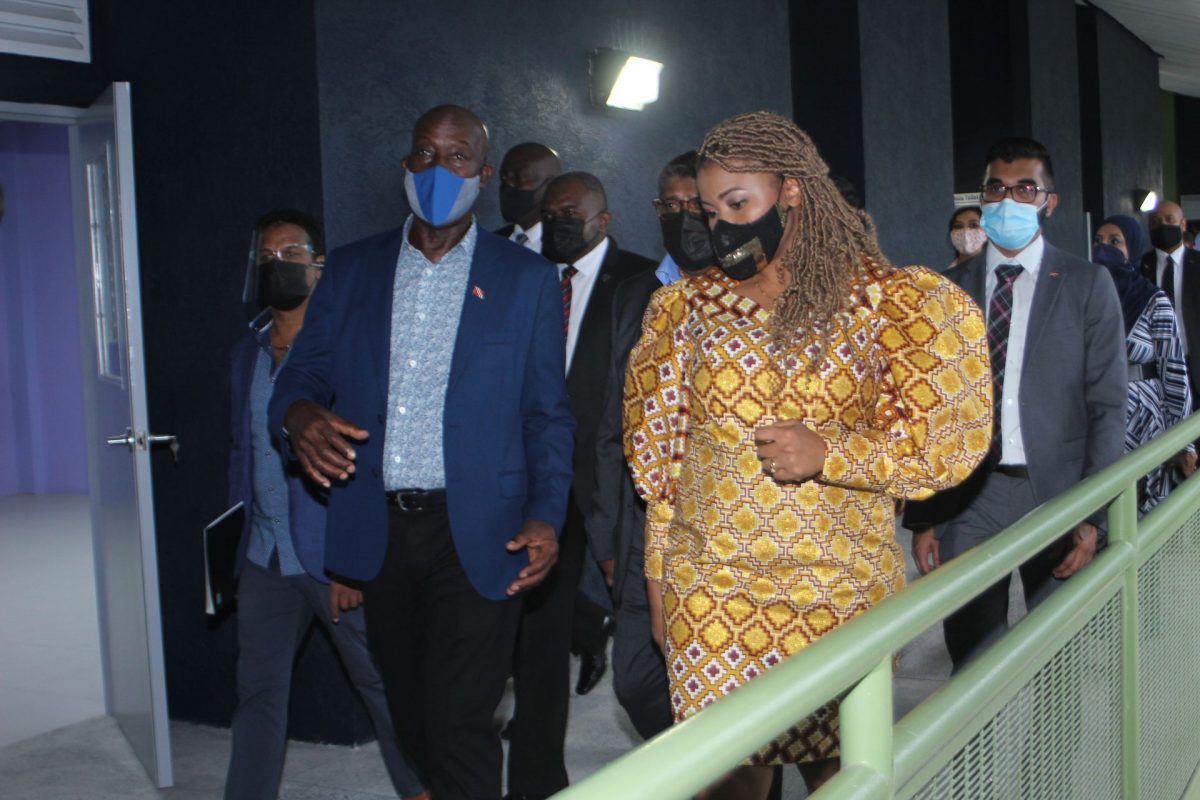(Trinidad Guardian) Minister of Education Dr Nyan Gadsby-Dolly said yesterday that virtual classes will continue when the new school term starts on September 6, while the ministry and the Government look at how many students received vaccines.
“We will look closely at the vaccination programme over the next few days as we determine who can be brought back physically, but our students should start school virtually come September 6th,” Gadsby-Dolly said while speaking at the commissioning of the San Juan Government Primary School.
The Government is also self-funding a $4 billion school construction programme. Prime Minister Dr Keith Rowley revealed some details of the programme at the event.
During his contribution, Rowley said the Government’s school construction was stymied by the loss of the two dry seasons because of the COVID-19 shutdown, adding that despite the challenges, the Government and the National Maintenance Training and Security Company (MTS) was “plodding through a major school construction programme across the country.”
He said whichever government was in power had to deal with those type of figures.
“But this programme that we are engaged in now is one that is funded directly out of the cash flow of the State and that is where the difficulty lies,” he said.
“A $4 billion programme being funded out of the cash flow.”
There are approximately 600 schools throughout the islands and while some schools belong to denominational bodies, the majority are under the remit of the State.
United National Congress (UNC) Member of Parliament for the area, Saddam Hussein, was also present at the event and talked about his disappointment that the building took so long to be delivered.
The Prime Minister addressed that matter.
He said that the delivery was based on cost and the circumstances of the building itself.
“Over the years, we have systematically, sometimes slowly, sometimes more rapidly depending on the circumstances of the individual schoolhouse and also the country’s ability to replace all of them with facilities of this nature,” he said.
He cited his own constituency, where the construction of the primary school took a long time and sometimes some schools needed more attention than others and priorities had to be shifted.
“All governments face that. So when you talk about disappointments in delays, I want you to see the overall perspective,” Rowley said.
The Prime Minister said that in previous administrations, there was an attempt to “get it all done at once.”
“And we are in fact operating a programme now where almost 100 schools are contracted out to be built at about the same time. That was a huge undertaking with some significant complications, not the least of which is funding,” he said.
Rowley said that this programme to deliver schools is not tied to any particular funding programme and is being financed by the State.
“What used to happen before, because of the expense involved in building a school, far less a package of schools, is that the State would seek long-term funding, particularly with the secondary schools,” he said.
The Prime Minister said while primary schools averaged around $20 million, the average secondary school cost upwards of $200 million.
“In the programme I just mentioned, there are one or two schools, one in particular which is on the horizon in the programme, where the original estimate we are looking at is $288 million,” he said.
“So if you get any complaints from anybody, understand the difficulty that the Government has in funding everything else that needs to be funded while at the same time finding sufficient cash in the daily, monthly, weekly, yearly cash flow to fund these programmes.”
Just last week, Rowley spoke at the opening of the Chatham Primary School and he is expected to speak at a similar school opening in Malabar on Thursday.
The new San Juan Government building contains four blocks, 19 classrooms, an audio/visual room, computer lab, music room and science lab. It can hold 420 students.






